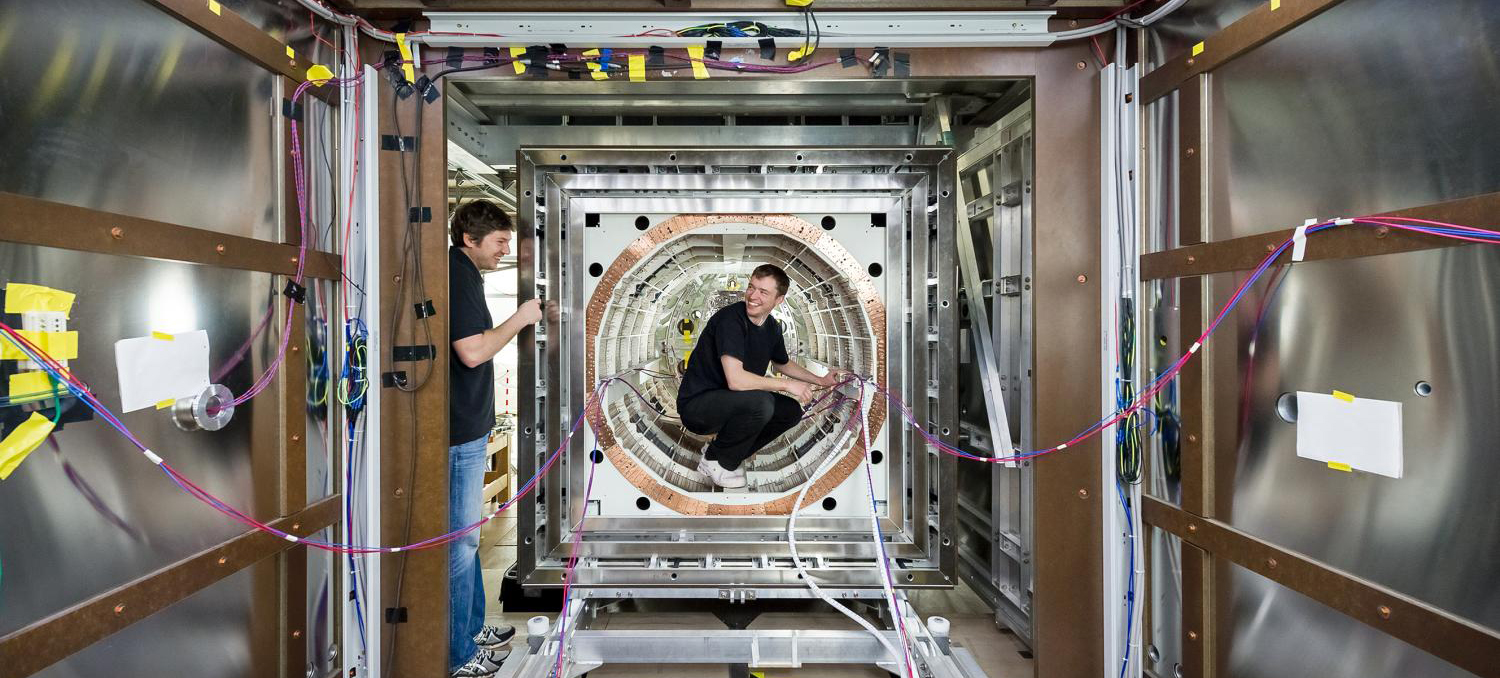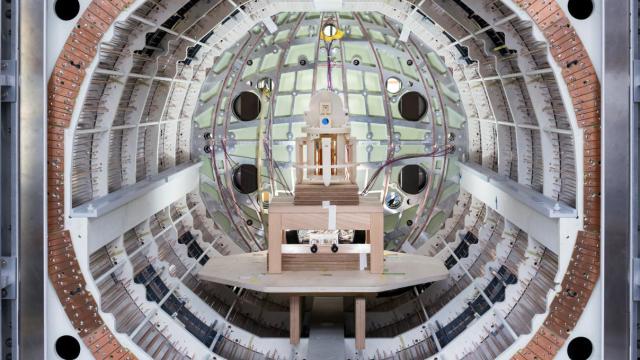This chamber might not look empty — but in fact it’s missing something that usually permeates every space on Earth: magnetic fields. And it will help physicists in the quest for a unifying Theory of Everything.
In fact, it’s the first magnetic shield to be built that provides a space with an extremely low magnetic field over a large volume. Built by a team of international scientists, the device will allow researchers to measure properties of fundamental particles that are usually clouded by the Earth’s ambient magnetic fields. In turn, it’s hoped that they will gain a better understanding of the physics of some of the most exotic particles we know of.

In the Journal of Applied Physics, the researchers explain that the device provides more than 10 times better magnetic shielding than previous shields. “The apparatus might be compared to cuboid Russian nesting dolls,” Tobias Lins, one of the researchers, told PhysOrg. “Like the dolls, most layers can be used individually and with an increasing number of layers the inside is more and more protected.” PhysOrg describes how they managed it:
The team’s big breakthrough came from in-depth numerical modelling of the arrangement of the precision treated magnetizable alloy, resulting in significantly optimised design details, like thickness, connections and spacing of layers. The materials in magnetic shields change their magnetization due to environmental influences, like temperature changes and vibrations caused by passing cars, and these shifts can be passed to the inside of the shield. The thinner sheets in the new design enabled a better balancing of the magnetic field in the metal, resulting in the smallest and most homogenous magnetic field ever created within the shielded space, even beating the average ambient magnetic field of the interstellar medium.
The ability minimise the presence of magnetic fields will allow the researchers to detect tiny fluctuations in particle properties which could otherwise go unnoticed. Teams are already using it to measure the distribution of electric charges on an isotope of xenon, and soon it will be used to look for magnetic monopoles — which are theoretically predicted but have never yet been physically detected. [Journal of Applied Physics via PhysOrg]
Pictures: Technische Universität Müchen
